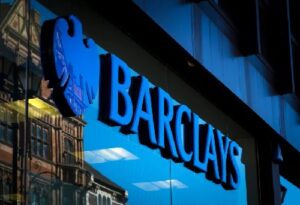 On March 14th, Barclays suspended the sale of two famous ETNs (OIL & VXX). That was a bit unusual, but not attention-grabbing.
On March 14th, Barclays suspended the sale of two famous ETNs (OIL & VXX). That was a bit unusual, but not attention-grabbing.
Yesterday, the firm announced the reason for the suspension, and a loss of GBP 450m ($590m) related to that suspension. The operational blunder behind it is impressive.
Here is Matt Levine’s column, reproduced verbatim. It’s the best explanation of the snafu so far.
Oops
If you are a high-powered trader at a big investment bank, two things that might happen are:
- You might make $600 million for your bank this year, or
- You might lose $600 million for your bank this year.
Neither is very likely, particularly not in this more boring post-crisis world, but either is possible. If you make $600 million that’s good and you’ll get a huge bonus. If you lose $600 million that’s bad and you’ll probably get fired, though it depends, and anyway you’ll have a cool war story that will quickly get you another big job somewhere else. There is a widespread view that traders have asymmetric upside, that they have a call option on their trading: They benefit a lot from trading well but don’t lose that much from trading badly.
If you are a mid-level securities lawyer in the structured notes division of a big investment bank, two things that might happen are:
- You will carefully tick all the boxes in a finicky and complicated business, allowing your bank to continue its program of issuing structured notes. The bank will make a lot of money from structured notes, and you will be paid reasonably well, but no one will be like “oh you’re our hero, you made sure all the forms were filled out correctly.” It’s just your job, and you do your job, and whatever.
- You will forget to tick one box and the bank will somehow lose $600 million on structured notes from a lack of box-ticking? I don’t even know what happens to you in this case. I guess you get fired? For losing the bank $600 million? Intuitively you seem to have asymmetric downside; you have written a put option on your securities lawyering. But maybe not? Like, you don’t even make enough money for firing you to be satisfying, or to feel commensurate with the $600 million loss; they might just not bother firing you. You might be too cursed for your bosses to get close enough to fire you. You might spend the rest of your days walking aimlessly around the office as everyone scurries away to avoid your evil vibes. Maybe a few of the traders will befriend you, though. A lawyer who loses $600 million on a trade is a rare beast, and much cooler to traders than all the boring regular lawyers who don’t lose money.
If you are a mid-level structured-notes lawyer, the first outcome is overwhelmingly likely; in fact I think it describes the career of every mid-level structured-notes lawyer who ever structured a note. Except one!
As part of its structured products business, Barclays Bank PLC (“BBPLC”), a subsidiary of Barclays PLC (“BPLC”), is a frequent issuer of structured notes and exchange traded notes in the United States and elsewhere. These securities are often issued to meet actual and anticipated client demand for such securities.
BBPLC has determined that the securities offered and sold under its US shelf registration statement during a period of approximately one year exceeded the registered amount (such excess, the “Affected Securities”) giving rise to a right of rescission among certain purchasers of Affected Securities requiring BBPLC to repurchase the Affected Securities at their original purchase price. As a result, BBPLC has elected to conduct a rescission offer to eligible purchasers of the Affected Securities. Details of the rescission offer will be published by BBPLC in due course.
Based on current market prices of the Affected Securities and the estimated pool of potentially eligible purchasers electing to participate in the rescission offer, Barclays expects the rescission losses (net of tax) to be c.£450m and the CET1 ratio of BPLC and its consolidated subsidiaries to be in the middle of the 13-14% target range as at 31 March 2022. This reflects a c.14 bps reduction from the estimated loss and a further c.15 bps reduction due to an increase in risk weighted assets in respect of short-term hedging arrangements designed to manage the risks to Barclays arising out of the rescission offer.
A footnote adds: “In August 2019, BBPLC registered US$20.8bn in maximum aggregate offering price of securities (the ‘Registered Amount’) and has exceeded the Registered Amount by approximately US$15.2bn.”
The technicalities of this are like … I wish I had some cool story to tell here, but this is the opposite of a cool story. This is: If you want to sell securities to the public, including structured notes and exchange-traded notes, you have to register the sales of those securities with the U.S. Securities and Exchange Commission. If you are a tech startup looking to sell stock to the public for the first time, this is an “initial public offering” and is a big fraught emotional moment. If you are already a giant public global bank like Barclays, and you sell billions of dollars of bonds and structured notes and other things every year, it is just boring administrative work.
You file a “shelf registration statement” saying, in essence, “we’re going to sell various assorted securities over the next few years.” This is a simple document describing all possible securities in vague and general terms, and it includes some very large arbitrary number for how many securities you might sell. (Barclays put $20,081,600,000 in its 2019 shelf registration statement.) And every time you sell some structured notes or ETNs or whatever, you do a “shelf takedown” (metaphorically, you take the registration statement down from the shelf, you use it to sell stuff, and you put it back on the shelf) and use some of that capacity. When you do a takedown, you write a “prospectus supplement” or “pricing supplement” describing the actual terms of the particular notes that you’re issuing, to supplement the generic shelf registration statement; you file the supplement with the SEC so that investors can read about whatever structured note they’re buying.
Ideally you’d KEEP TRACK OF HOW MUCH YOU ISSUE, and subtract each issuance from the $20.1 billion you started with, and when that $20.1 billion gets down to, you know, $2 billion, you file another shelf registration statement with the SEC saying “we might do another $20 billion of stuff.” And that new shelf registration is quickly approved by the SEC,[1] and nobody thinks too much about it, and then you can sell $20 billion more stuff, and the numbers are all arbitrary and this is all administrative.
And if you just forget — if some junior person in the internal legal team leaves, and forgets to pass along the “shelfcapacityleft_07.xls” spreadsheet to her successor, and it stops being updated — then, uh. Then, at first, nothing happens. No bell rings. The SEC doesn’t call you up to be like “I see you are selling securities illegally.” (They don’t really keep track either.) The buyers of these notes don’t notice: You are still (you think) doing shelf takedowns; you are still writing pricing supplements describing the new notes and filing them with the SEC. The buyers have access to all the information they would have had if you had filed a new shelf; nobody is harmed by any of this. You just keep bopping along as though everything was fine, and then one day a new junior analyst starts on the legal team and finds the “shelfcapacityleft_07.xls” spreadsheet in a folder and asks the vice president “hey what is this,” and the VP looks, and she realizes what it is, and they check the math 20 times because it seems too horrible to be true, and then they all leave for the bar at noon because it is not a fixable error and they will miss each other when they’re all fired tomorrow.
It is not a fixable error because the rules are harsh, and there is no no-harm-no-foul rule for illegal securities offerings. If you sell securities without a valid registration statement — as Barclays did — then you have to offer to buy the securities back at the price you sold them for. If the securities were structured notes and ETNs — that is, bets that some index will go up or down, or weird exotic options bets — and if you don’t catch the mistake for a whole year, then some of them will have gone down a lot. You sold them for $100 and now they are worth $50 and you have to buy them back at $100. (Others will have gone up a lot, but you don’t get to buy those back at par: You have to offer to rescind all of your sales, but the holders can decline.) You can call up the SEC and say “we messed up a little bit but no one was harmed, sorry,” and the SEC will say “ah yes we see, we understand, no one was harmed and you didn’t mean it,” and they will feel sorry for you, but they will still make you offer to buy back all the ETNs. And then you’ll lose 450 million pounds.[2]
This is just, like, securities regulation is complicated, and if you forget to do a complicated thing then you might have to give an arbitrary amount of money to an arbitrary group of people. I don’t know what to tell you. Nobody does:
“It looks like an operational or legal failure,” said Jerome Legras, managing partner at Axiom Alternative Investments, a fund that specializes in bank debt. “It’s hard to believe they would do such a stupid thing. This honestly is the first time I’ve heard of something like this.”
Me too! Barclays is going to investigate what happened:
Barclays has commissioned an independent review of the facts and circumstances relating to this matter including, among other things, the control environment related to such issuances. Separately, regulatory authorities are conducting inquiries and making requests for information.
I hope that they will eventually publish the full report and we can find out what the actual file name of “shelfcapacityleft_07.xls” was and when it was last updated. Perhaps we will learn the name of the junior analyst in the legal department responsible for updating the spreadsheet, and which law school she left for when she stopped updating it. And maybe the name of the mid-level securities lawyer in charge of making sure that the analysts updated it, the one who forgot to tell the new analyst where to find the spreadsheet. In a fair world, that person would be as legendary as a trader who lost $600 million, and would have no trouble finding a new job. Someone should hire this lawyer! Not great with details, but, for a lawyer, an absolutely incredible familiarity with risk.
Two other things. First: This will cost Barclays 450 million pounds, but who will get the money?[3] Clearly part of the answer is: Barclays’s high-net-worth clients who bought structured notes that went down. Structured notes are generally derivative bets on stock indexes and stuff; they tend to be sold directly by Barclays to customers, and then held by the customers to maturity. Barclays’s structured note sales for roughly the last year were illegal, so if you were one of those clients, you probably still own the notes, and if they went down — if the index that you bet on went down — you can make Barclays pay you back. A nice random windfall for you.
But another part of the answer is that this registration statement covered not only Barclays’s structured notes business (lots of smallish issuances aimed at high-net-worth clients) but also its exchange-traded notes business. Bloomberg News notes:
The statement announcing it had launched $15.2 billion more notes over the course of about a year than it had registered for didn’t specifically mention two offerings tied to stock volatility and oil, respectively, known as the iPath Series B S&P 500 VIX Short-Term Futures ETN (ticker VXX) and the iPath Pure Beta Crude Oil ETN (OIL).
But on March 14 the issuer moved to block new money flowing into the products, which at the time had a combined $1 billion in assets — spurring wild price moves while disconnecting their market values from underlying assets.
In the case of VXX, which allows traders to wager on gyrations in stock prices, the market fallout is potentially significant, with Goldman Sachs Group Inc. strategists among those noting its size and influence among short sellers and options traders.
VXX was trading at $48.04 a year ago; it was down to $28.81 on March 14, when Barclays stopped selling more of it. If you bought VXX to bet that volatility was going up, you lost — but if you bought at the right time and in the right way, you get to tear up your bet. Presumably the people who bought VXX directly from Barclays are mostly market makers, and the biggest holders of VXX today are market makers.[4] I am not sure exactly who will get to demand rescission on these trades, and I suspect that people who bought from the market maker might also have a case. But it would be funny if Barclays’s 450 million-pound loss was mostly a random windfall for high-frequency traders who make markets in exchange-traded funds.
Second: Barclays did not notice this for a year, and I suspect that nobody else did either. But you could have. All of this stuff is more or less public. Here is Barclays’s 2019 shelf registration statement, registering $20,081,600,000 of securities. Here is the SEC’s web page for that “file number,” that is, for securities sold from that registration statement. There are many hundreds of entries on that page; each day, Barclays would sell a bunch of new structured notes from this prospectus. More or less at random, here’s $2,657,000 of “Callable Contingent Coupon Notes” issued in January 2020.[5] You could have kept your own “Barclaysshelfcapacityleft.
And then you could have … you know? Done trades? You could have opened up an account at Barclays, and when your salesperson called and said “hey would you like a bond that pays 6.5% interest but loses money if the worst of several stock indexes goes down a lot,” you could have said:
- Oh yes!
- For, like, $100 million.
- But let’s increase the interest rate and the barriers, to make it as risky as possible: Make it pay 20% a year, but lose money if any of those indexes go down a moderate amount.
- Also please sell me $100 million of the opposite note, one that pays 20% a year but loses money if any of the indexes go up.
Get it? If you know that Barclays is selling these notes illegally, and Barclays doesn’t, then (1) you are getting a put option on the notes from Barclays and (2) Barclays is not charging you for it. So you want to buy a lot of the notes (which are mispriced), and you want the notes to be risky (which makes the put option more valuable). And ideally you would buy opposite notes to lock in a profit: One goes up a lot, one goes down a lot; you make money on the one that goes up a lot, and you hand the other one back to Barclays and demand your money back.
I don’t think anyone did this trade, in part because this stuff is tedious to keep track of and not worth it because nobody ever messes it up. But Barclays did! And if you caught them, oh man, what a great trade.

The loss is big enough to impact its capital ratio. The firm is suspending a planned share $1 bn buy-back and launching an internal investigation.
References
- Navesink International, August 12, 2021: The long term expected value of your ETNs is zero
- Barclays suspends sales of two products linked to oil, volatility, March 14, 2022: Barclays suspends sales of two products linked to oil, volatility
- Barclays hit by $590 million loss on product sales blunder, March 28, 2022: Barclays hit by $590 million loss on product sales blunder
- Euromoney, March 28, 2022: Barclays ETN snafu could cost it £450 million
- Financial Times, March 28, 2022: Barclays expects £450mn hit from $15bn US trading error
- eFinancialCareer, March 28, 2022: Barclays’ bankers could have 2021 bonuses clawed back


